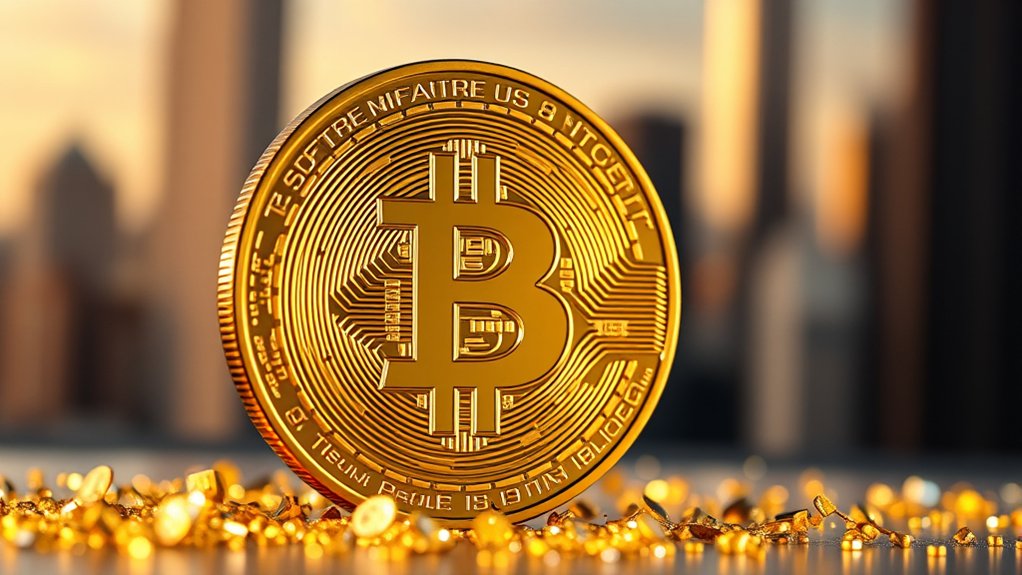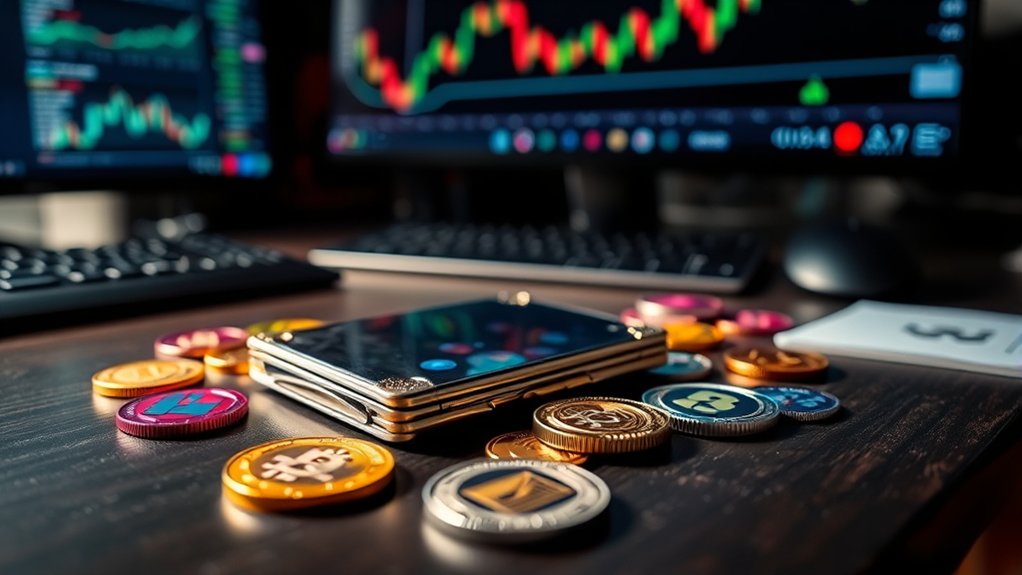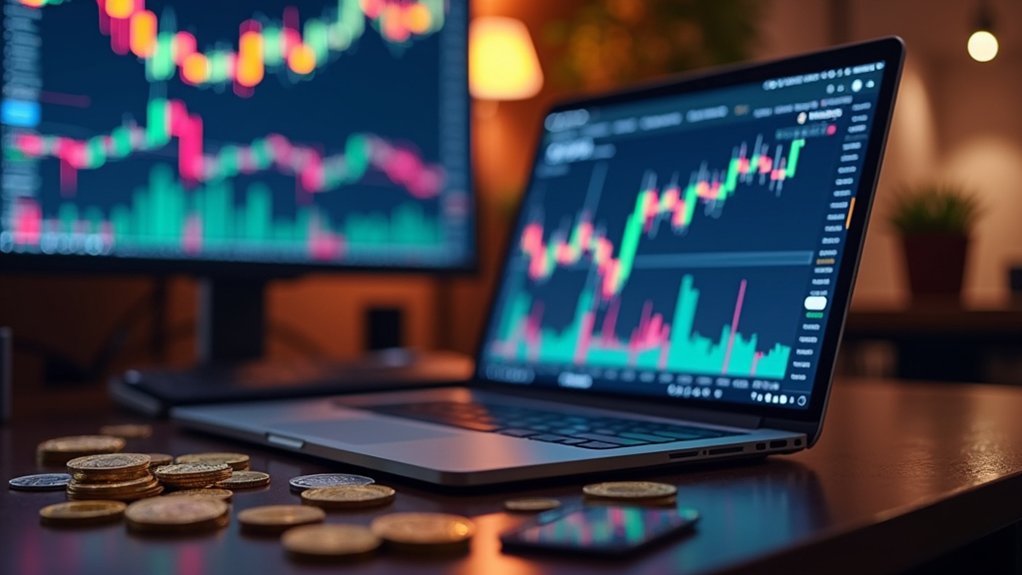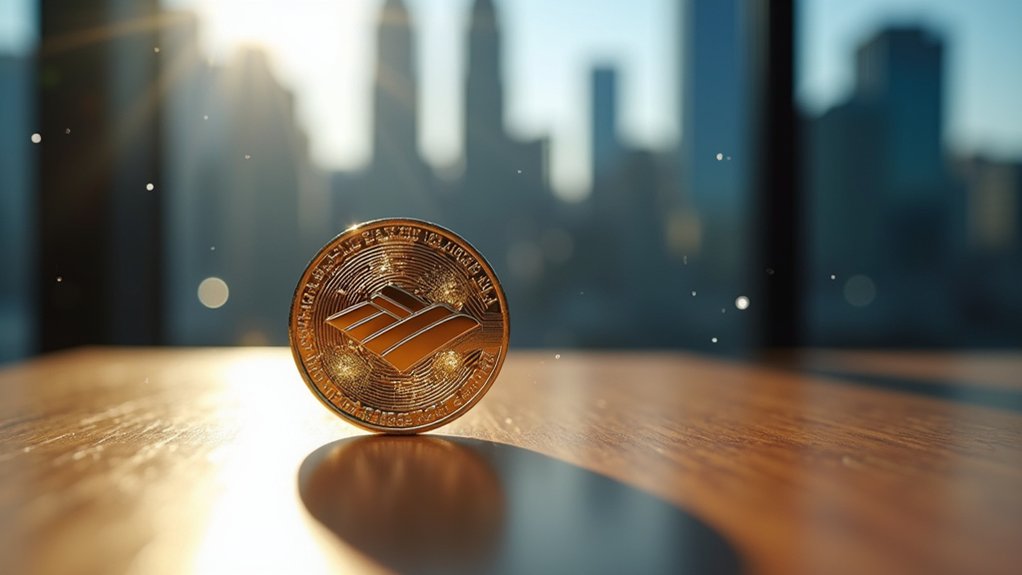Bit money? That’s Bitcoin’s nickname. The smallest unit? That’s a satoshi, named after Satoshi Nakamoto, the elusive founder. One satoshi equals 0.00000001 BTC. Yep, that tiny fraction makes microtransactions a breeze. It’s perfect for newcomers who don’t want to spend a whole Bitcoin. Satoshis add up, letting users enjoy everyday transactions without headaches. So, if you’re curious about this quirky currency, there’s a lot more beneath the surface waiting to be uncovered.
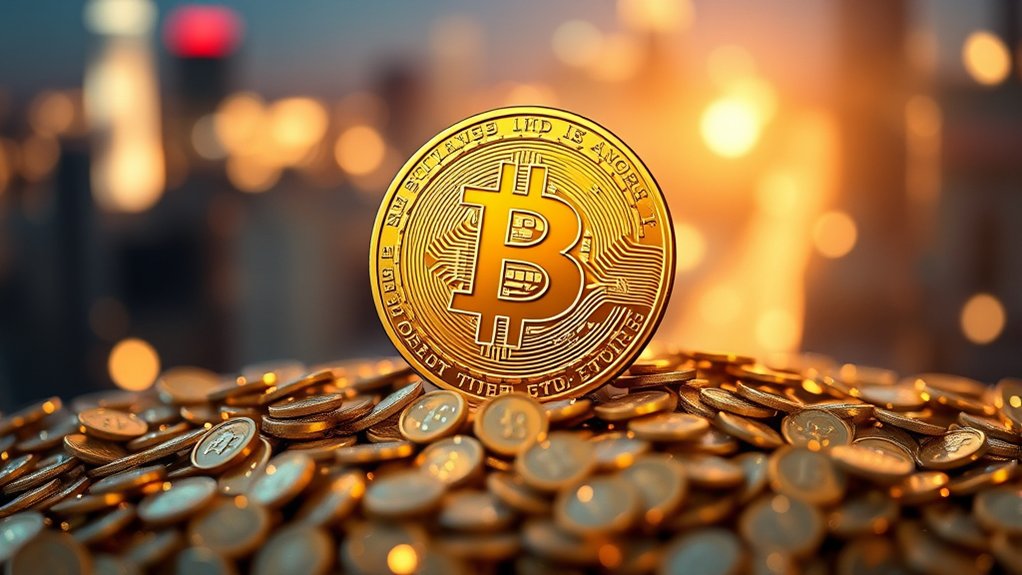
In the wild world of Bitcoin, the satoshi reigns supreme as its tiniest unit. It’s like the little guy in a bustling city, often overlooked but essential to the whole system. One satoshi is just 0.00000001 BTC—yep, that’s right, a whopping one hundred millionth of a Bitcoin. You could almost say it’s the ant of the crypto jungle. And it’s named after the mysterious founder, Satoshi Nakamoto. So, next time you hear “sat,” remember it’s not just slang; it’s a nod to the genius behind it all.
Why does this tiny unit matter? Well, with Bitcoin’s price soaring to the moon, satoshis allow for transactions when you don’t want to fork over an entire Bitcoin. Trying to buy a coffee with a whole BTC? Good luck. But with satoshis, you can make microtransactions easier. It’s like splitting the bill, but for digital currency. Additionally, since one bitcoin is divided into 100 million satoshis, it allows for precise pricing and flexibility in transactions. Moreover, satoshis emerged around 2010-2011 as Bitcoin’s value increased, leading to their widespread adoption. Notably, these divisions make it possible to conduct transactions using Bitcoin addresses, which are essential for secure transfers on the blockchain.
Plus, it lowers barriers for newcomers. Who wouldn’t want to dip their toes into the Bitcoin pool without diving in headfirst?
Satoshis also serve a practical purpose. They’re used to calculate fees. Think of it as a way to keep things tidy. When you see transaction fees per byte, it’s all about those little satoshis doing the heavy lifting.
And let’s not forget the community‘s love for this unit. It’s not just a number; it’s a badge of honor.
In a world where Bitcoin can be divided infinitely, satoshis stand out. They make everyday transactions possible, allowing people to participate without needing a full Bitcoin. It’s all about precision. When trading, using whole numbers of satoshis simplifies calculations.
Frequently Asked Questions
How Can I Buy or Sell Bit Money?
Buying or selling this so-called “bit money” is pretty straightforward.
Hop onto an exchange like Coinbase or Bitstamp. Want to buy? Just grab a fraction of Bitcoin; they offer it in tiny pieces, so no need to break the bank.
Selling? Easy peasy—convert it back to cash on the same platforms.
Just remember, prices bounce around like a rubber ball, so keep an eye on those market shifts.
Happy trading!
What Wallet Supports Transactions in Bit Money?
When it comes to wallets that handle transactions in bit money, many options exist.
Popular choices like MetaMask and Ledger make it easy. They support tiny transactions, which is great because who wants to deal with hefty fees for a few bucks?
And let’s not forget mobile apps like Blockstream Green—they’re user-friendly and precise.
Just remember, security matters. So, pick wisely. After all, no one likes losing their hard-earned bits, right?
Is Bit Money Accepted in Online Stores?
Bit money? Yeah, it’s creeping into online stores. A few retailers are on board, adding it as a payment option.
Why? Because why not? It’s trendy. Sure, they don’t *have* to accept it, but it makes transactions easier—especially when you’re throwing around tiny amounts.
And let’s be real, who doesn’t want to pay with something that sounds like a sci-fi currency? Just remember, not everywhere is on the Bitcoin bandwagon yet.
How Does Bit Money Relate to Bitcoin Mining?
Bit money ties into Bitcoin mining like peanut butter to jelly. Miners solve puzzles, earn Bitcoin, and get rewarded in satoshis—those tiny fractions of BTC.
It’s like getting paid in cents for your hard work. These little units are key for transactions too. They make Bitcoin usable for everyday stuff.
Without satoshis, miners would be stuck with big, clunky numbers. Who wants that? Small is the name of the game in this digital currency world.
Can I Convert Bit Money to Traditional Currency?
Sure, you can convert bit money—often thought of as Satoshis—into traditional cash.
It’s not magic; it’s just a process. Use a crypto exchange, where the prices swing like a pendulum. One moment, your Satoshis could buy you a coffee, and the next? Maybe just a sip.
Remember, regulations vary, so do your homework. The conversion depends on market rates, so don’t expect to get rich overnight.
It’s a wild ride!
